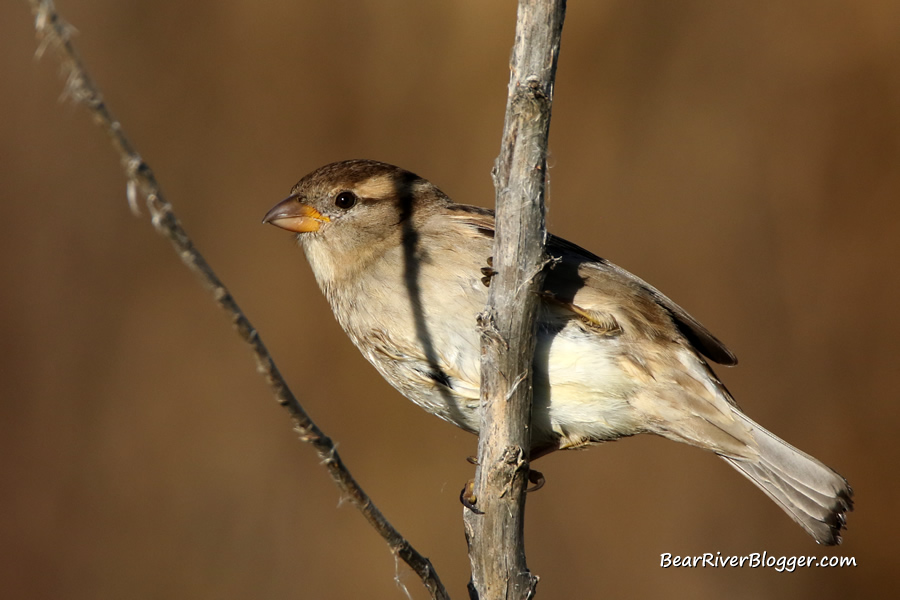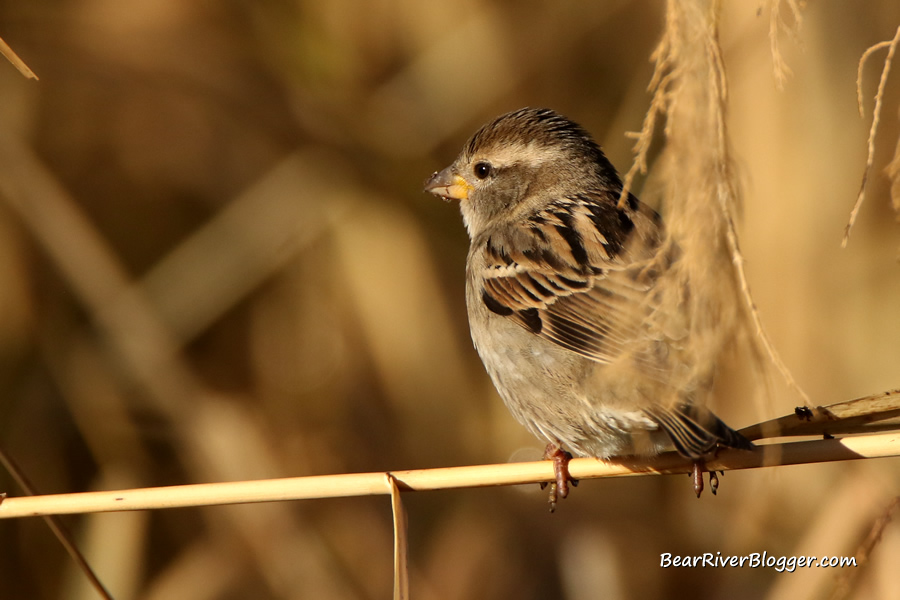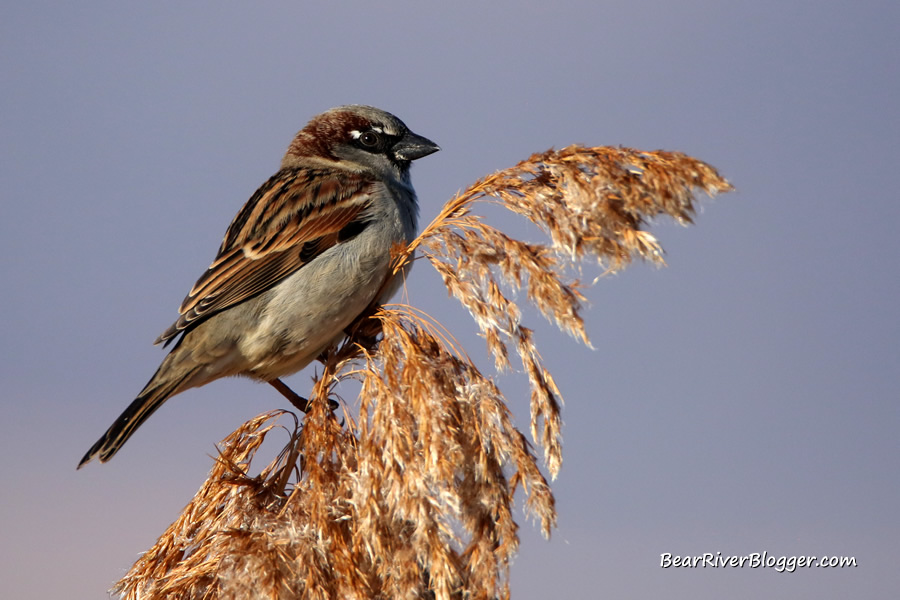I might be the only one with this notion, mind you, but the “dreaded” house sparrow, or so it is labeled by many birders, is what I personally would call a beautifully adorned bird in its own right and deserves at least a little admiration.
Maybe not as colorful or flashy as many other birds of similar size and stature, the male house sparrow, in particular, is very becoming with its subdued brown and black mottled plumage covering its wings, tail, back, and head.
With that said, however, and largely due to how messy and unruly they can be at my backyard feeder, they aren’t my favorite birds to either watch or photograph, not by any means, when there are other more natural, i.e. native, options available at the time.
(House Sparrows Feeding At A Backyard Feeder. For short nature clips about backyard birdwatching, check out Backyards For Birds channel on YouTube for videos and updates about setting up a backyard specifically for birds.)
But I will say in their defense, however, there are moments that do come up once in a while, like it did a couple days ago on the Bear River Migratory Bird Refuge auto tour route, for example, when I do give the house sparrow a little bit of deserved time in front of my camera which, by the way, is when and where I procured all of the images for this particular blog post from.
House sparrows are what biologists refer to as an “invasive” and “non-native” species of bird that originated from Europe, Asia, and northern Africa.
They were reportedly first introduced into the United States in 1851 with an initial release of house sparrows into the area of Brooklyn, New York, and followed up later with other releases during the early 1870s in Salt Lake City, Utah, and San Francisco, California.
I haven’t been able to track down by whom or for what reason exactly this particular type of sparrow was captured, brought over, and released into the United States but from these introductions they have pretty much flourished unabated and, as a result, spread across most of the North American continent, including much of Canada, most of Mexico, and all of the United States.
From their innate ability to easily adapt to their new environment here in America, the house sparrow is, without question, one of the most common birds found in the United States, especially in urban and suburban areas where, contrary to most other birds, they have actually thrived being so close to civilization, living literally right among us humans in our man-made environments.
House sparrows are omnivores, eating both bugs and seeds of many kinds throughout the year, including corn, milo, and sunflowers, just to name a few, depending upon the season and their location.
It is this wide variety of suitable foods, coupled with their aggressive nesting behavior and well-known veracious appetite at backyard birdfeeders, that has definitely helped propel the house sparrow to easily spread across the North American continent as it has.

And their aggressive nature, especially when feeding at the backyard bird feeder, is what has forever labeled the house sparrow as a nuisance bird, of sorts, in the minds of birdwatchers everywhere.
In contrast to most other species of birds found here in the United States, the house sparrow is a cavity-nesting bird that actually prospers by utilizing and prefers to nest in a wide variety of manmade structures, including eaves of homes, sheds, barns, holes in walls, and, of course, artificial birdhouses meant for other bird species.
That doesn’t mean they won’t or don’t nest in natural places such as cracks and crevices in trees, they most certainly do just that in the large elm trees in my yard every summer, but house sparrows do prefer nesting in manmade structures whenever possible, thus giving reason to why they do so well and are so common in a variety of urban settings like they are.
In fact, house sparrows have been classified as a very aggressive species of bird during nesting season, oftentimes pushing out other birds that are native to a particular area by overtaking many of the oftentimes limited and thus valuable tree holes and nesting boxes meant for other cavity-nesting birds, including bluebirds, as one example.
Spend any amount of time on the Bear River Migratory Bird Refuge and you will find that house sparrows are a somewhat common bird on auto loop throughout the year but one that gets very little, if any attention, from birders and photographers, myself included on most days, to help break their stereotype of being a “nuisance bird” and show just how beautiful these so-called “pesky creatures” actually are.

Just a few days ago, in fact, while I was parked along the refuge auto loop intently watching and photographing red-winged blackbirds for a previously posted article I came across quite a few house sparrows that offered me a couple minutes of photography on what was a very slow day of birdwatching so I took full advantage of the situation, hopefully showcasing these little birds in a different manner than what they are usually cast in.
It’s interesting to note that their own success story, one stemming from them being pulled from their native lands and transplanted into a new region, is also their own downfall and why house sparrows aren’t favored as much as other birds, native or not, by birders or backyard nature enthusiasts everywhere.
Even though house sparrows have been known to be aggressive birds at both backyard feeders and nesting locations everywhere, the bottom line is it isn’t their fault they are now here and, well, here to stay if truth be told.
They are only living how house sparrows know how to live so we might as well get used to them being here and, honestly, maybe even enjoy them to some degree, accepting the reality of the matter that they are, in fact, still birds of the world that were, unfortunately, put in a certain place on this earth by the hand of man, a place where they weren’t supposed to be.
If you are a birdwatcher or a nature enthusiast, I offer you to head on over to our subscribe page and sign up for future blog posts where we share our nature excursions through both photography and the written word for locations both on and off of the famous Bear River Migratory Bird Refuge.








